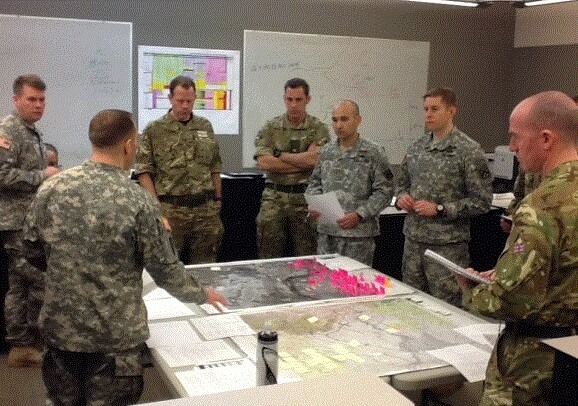“We shall not cease from exploration
And the end of all our exploring
Will be to arrive where we started
And know the place for the first time”
T.S. Eliot.
We live in an increasingly hazardous and complex world– one where one needs to have one’s wits and senses finely tuned to what is going on around us, in the near, middle and far distance. This is called situational awareness or simply mindfulness. In her latest book on Resilience, Judith Rodin defines it as “An ability and willingness to constantly assess, take in new information, reassess and adjust our understanding of the critical and relevant strengths and weaknesses, and other factors, as they change and develop”.
Having worked in high-risk environments in the military for over 30 years, I automatically take a seat in a restaurant or at a bar from where I can clearly see the door and observe who is leaving and who is coming in. The first thing I do, having checked into my hotel room, is to make a reconnaissance of the emergency exit routes and possible route out of the window should it be needed. This has paid dividends on several occasions.
I become increasingly annoyed at those human specimens who wander through life and are increasingly isolated from their surroundings. We have all seen them on the train – ridiculous looking headsets on their ears banging out dangerously loud decibels of sound, eyes focused on the latest game on their Smartphone, head down and oblivious to what is happening off the screen – I often feel that they would not notice should a small nuclear weapon land alongside them.
In business, it is even more important that we maintain Corporate Situational Awareness (CSA) simply to strengthen our resilience and ensure that there are no shocks lurking around the next corner. We need to be quite clear what our ultimate objective is and where it sits in space and time – but we must be flexible about the route we take to reach that destination and be prepared to make diversions and detours as we advance along the journey.
Creating CSA needs good information and intelligence gathering. This does not need input from the CIA or MI6, it can be done through open-source research, reading and of course reconnaissance – for time spent in reconnaissance is never, ever wasted. It can be achieved by talking to observers or experts on the ground. It needs some blue-sky thinking by the in-house team to analyse and make sense of the data gained and trends identified. It needs organisations to move around with their eyes wide open and every sensor connected and working.
CSA may not always forecast the strategic shocks such as the fall of the Berlin Wall or the events of 9/11. But even so, it will keep our risk registers and business continuity plans fully up to date and stimulate our risk management protocols. It requires foresight, vision, an open-minded approach, analysis and most importantly, the ability to ask the simple question ‘what if?’ When I was at the staff college, the army taught a most useful tool called simply ‘the appreciation’. It was later renamed to ‘the combat estimate’. This was a formal written planning exercise before launching an operation where we were invited to consider the key factors such as the ground, the enemy and the weather. It forced us to look at possible routes, dominating ground and distance. It encouraged us to compare enemy and own ‘friendly’ forces strengths and weaknesses. We had to examine surprise and secrecy. It demanded that we examine all the options and courses open to us and the advantages and disadvantages of each one. At the end of the exercise, it was time to select the best course of action and justify why – perfectly titled ‘the commander’s decision’. But the appreciation’s strength really lay in just words. At the end of every section came the checkpoint, namely the question ‘So What?’ Those are 2 most powerful words if used correctly. I found the exercise best done together with my chief of staff who would question and argue the case for and against each issue. A bottle of stiff spirit also generally helped the debate which often went on through the night until the sun rose.
I have often used the appreciation process in civil life. Buying a new car or a house. Making a large investment decision or applying for a new contract. The exercise clears the mind and seeks to ensure that no major factors are overlooked or conveniently ignored. It introduces checks and balances to ensure that no mistakes are made – people’s lives counted directly on getting this right. The process does not always produce the answer we may have wanted, but then again, perhaps we were looking in the wrong direction in the first place?
But that is not the end of the story. Following the appreciation, an ‘Orders Group’ (the O Gp) was held to give everyone their orders and ensure that they understood what was required of them and their troops to successfully obtain the objective. This was done verbally so that the commander could put his or her own spirit and energy behind the mission at hand and inspire and enthuse the various elements of the force and stamp their confidence and authority on the mission.
The military have some great tools in their box. nStratagem will be developing the theme of growing one’s CSA over the next 12 months.
Jeff Little is an Associate of nStratagem. We have a great deal of experience in helping organizations through these issues and challenges. Feel free to view our Case Studies and contact us directly to see how we can help you.
Powerful Resources When You Need Them Most™

